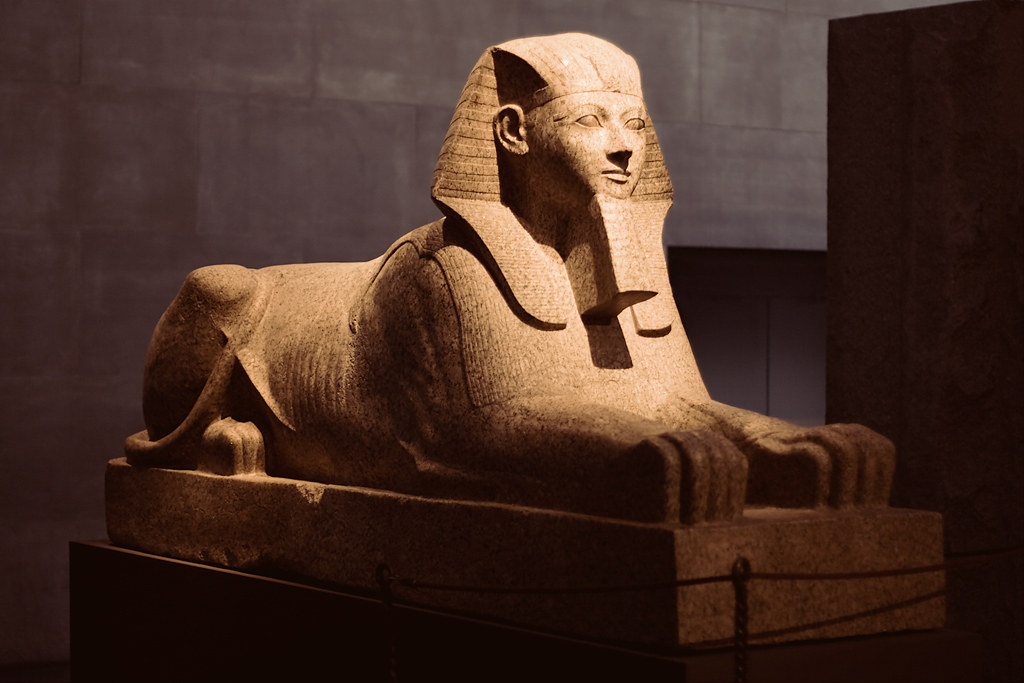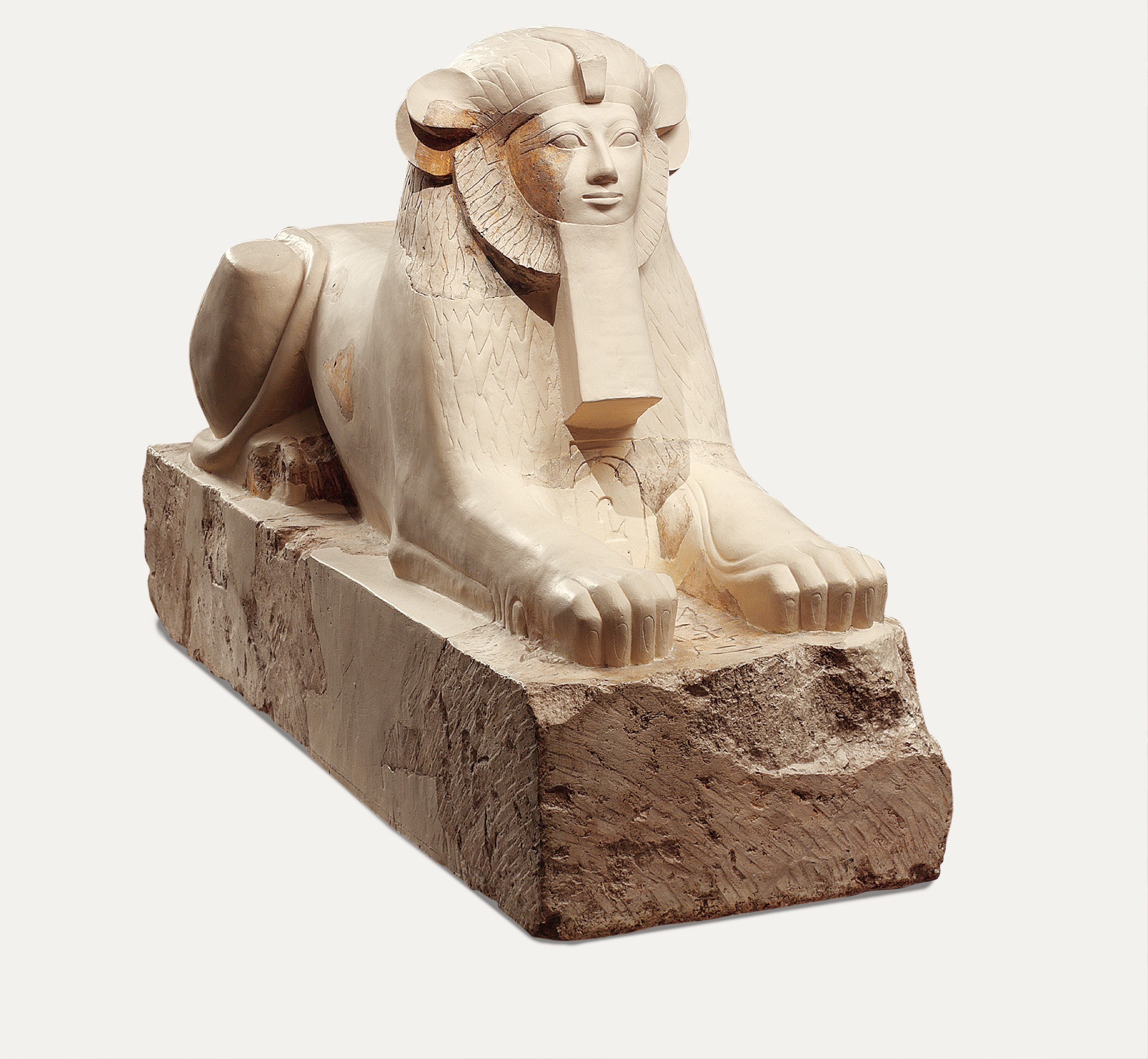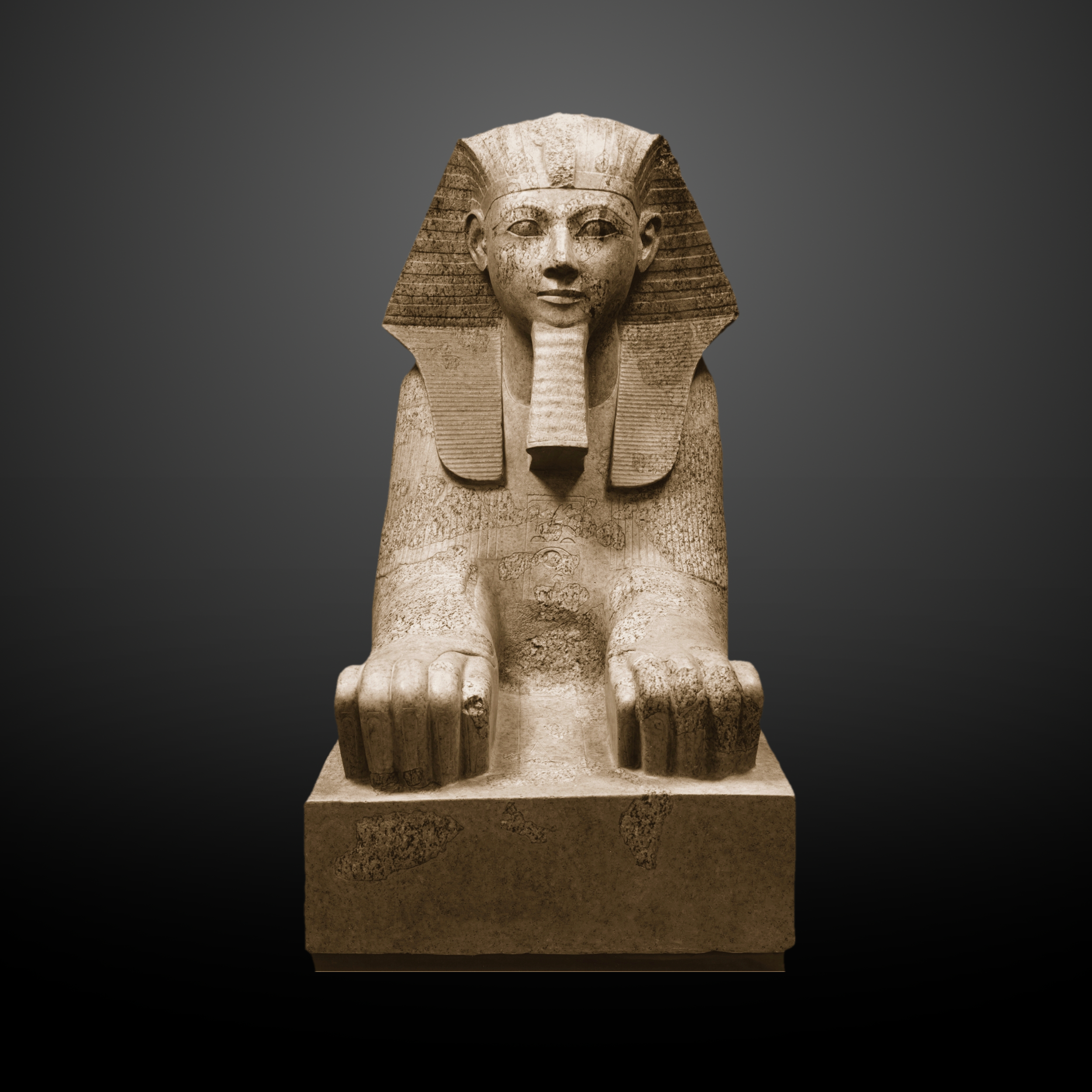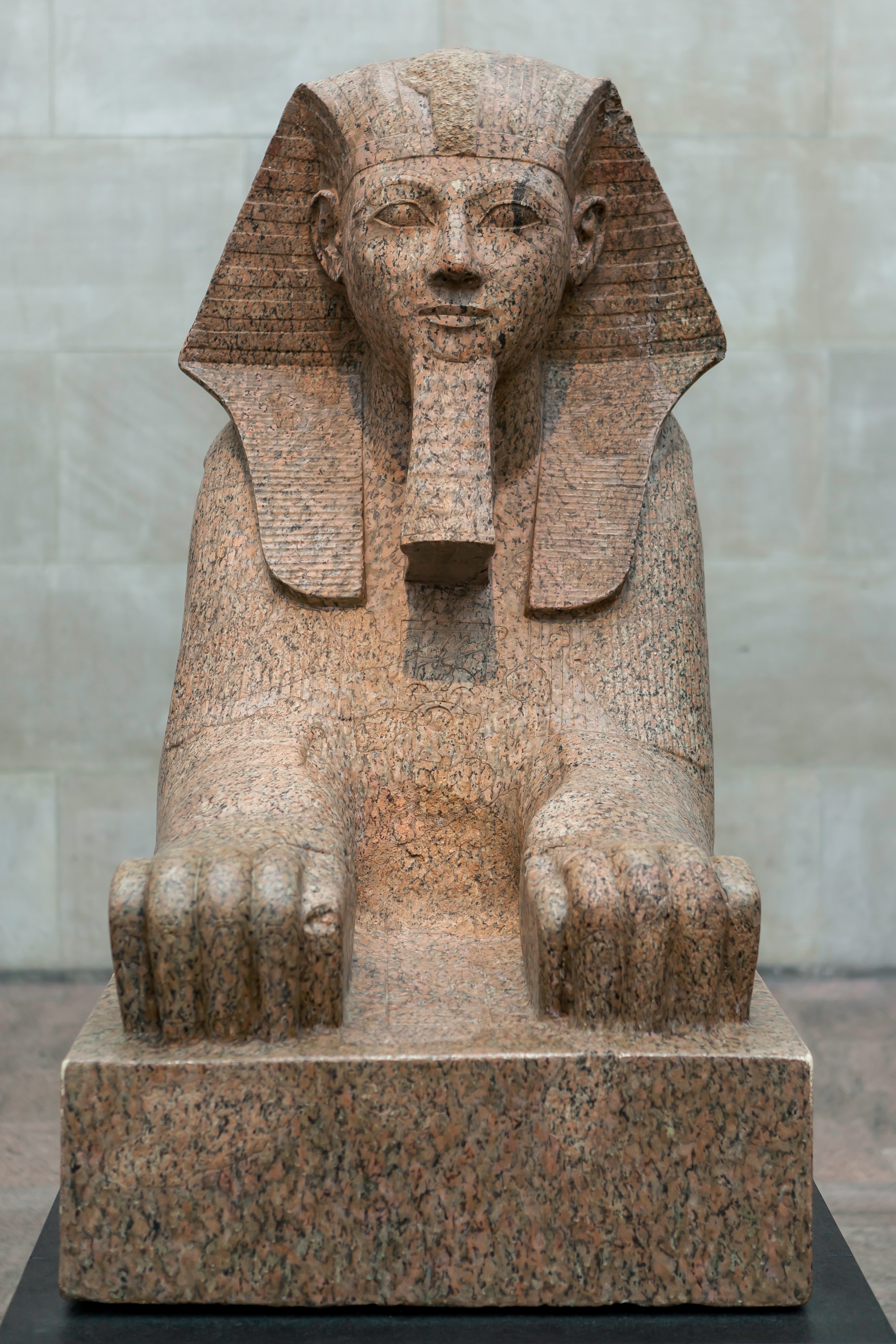This sphinx is one of several granite sphinxes that once stood in Hatshepsuts mortuary temple at Deir el-Bahri. She made sure not to be mistaken for anything but a legitimate pharaoh.

Sphinx Of Hatshepsut From Metmuseum Org This Colossal Sp Flickr
A female depicted as a male king.

. It would have earned its patron a special role in Egyptian and architectural histo-ry whether built by a female or male. The Great Sphinx of Giza is a giant 4500-year-old limestone statue situated near the Great Pyramid in Giza Egypt. How did the Feminist artists Judy Chicago and the Guerrilla Girls expand the opportunities and subject matter of art to include women and issues relevant to them.
On view at The Met Fifth Avenue in Gallery 115. The sculpture of the Sphinx of Hatshepsut depicts. The Female Pharaoh Hatshepsut ca.
This is expressed as well in Hatshepsuts funerary tem-ple her greatest visible legacy. In this life-size statue Hatshepsut is shown wearing the nemes-headcloth and the shendyt-kilt. She has the body and mane of a lion with the head of a human.
This seven-ton granite Sphinx of Hatshepsut has the body of a lion and a human head wearing a head-cloth and royal beard. In contrast women have tended to. It depicts a seated Hatshepsut in female clothing wearing the nemes crown and is inscribed with her pharaonic throne name Maatkare Truth is the Soul of the Sun and feminized versions of her kingly titles Daughter of Re etc.
The sculptor has carefully observed the powerful muscles of the lion as contrasted to the handsome idealized face of the pharaoh. Two of these statues depicts her unequivocally as a. In this sculpture the pharaoh Hatshepsut the first important female ruler known to history is shown as a sphinx a guardian figure with a human head and a lions body.
She wears the same ceremonial costume as male pharaohs including a false beard and a striped royal headcloth that was originally painted blue and yellow and featured a symbolic protective cobra known as the. A female depicted as a male king There are no artworks that consciously counter stereotypical representations by showing men as vulnerable and women as powerful. These majestic statues depicting the king with a lions body and a human headface are epitomes of the kings might and visual manifestations of his superhuman powers.
In this sculpture the pharaoh Hatshepsut the first important female ruler known to history is shown as a sphinx a guardian figure with a human head and a lions body. Another seated statue from. The sculpture of the Sphinx of Hatshepsut depicts.
Artworks depicting men have historically referred to their powerful bodies or depicted them in leadership roles. These are part of the ceremonial attire of the Egyptian king which was traditionally a mans role. Sphinx of Hatshepsut from ca.
Measuring 240 feet 73 meters long and 66. A female depicted as a male king. It was originally made for Hatshepsuts funerary temple at Deir el-Bahri which is a complex of temples dedicated to pharaohs of her family.
A female depicted as a male king. False There are no artworks that consciously counter stereotypical representations by showing men as vulnerable and women as powerful. The sculpture of the Sphinx of Hatshepsut depicts.
She wears the same ceremonial costume as male pharaohs including a false beard and a striped royal headcloth that was originally painted blue and yellow and featured a symbolic protective cobra known as the. This colossal sphinx portrays the female pharaoh Hatshepsut with the body of a lion and a human head wearing a nemes headcloth and false beard. This odd combination is evident in a red granite piece on display in the Metropolitan Museum of Art in New York.
On view at The Met Fifth Avenue in Gallery 131. This limestone and plaster piece depicts the female pharaoh Maatkare Hatshepsut as a sphinx. Sculpture depicts her as a sphinx.
The sculpture of the Sphinx of Hatshepsut depicts. Granite Sphinx Statue of Hatshepsut Sphinx statues have a long tradition in Egyptian history the earliest examples dating to the Old Kingdom and the most famous being the great sphinx of Giza. A female depicted as a male king In Catherine Opies Melissa Lake Durham North Carolina the depiction of gender is.
A female dedicated as a male king In Catherine Opies Melissa Lake Durham North Carolina the depiction of gender is made ambiguous for what reason. 1479-1458 BCE the Metropolitan Museum of Art New York. The sculpture of the Sphinx of Hatshepsut depicts.
Carved between the paws of the statue is a cartouche enclosing the pharaohs throne name Maatkare Truth is the Soul of the Sun c. 14791458 BC is a sculpture of Pharaoh Hatshepsut as a sphinx made of granite that is attached to a rectangular base on the bottom. This graceful life-size statue depicts Hatshepsut in female attire but she wears the nemes headcloth a royal attribute usually reserved for the reigning king.
The sculpture of the Sphinx of Hatshepsut depicts. The statue has the usual symbolic powerful muscles of the lion and the idealized face used for pharaohs.

Sphinx Of Hatshepsut New Kingdom The Metropolitan Museum Of Art

Sphinx Of Hatshepsut New Kingdom The Metropolitan Museum Of Art

File Sphinx Of Hatshepsut Met 31 3 166 F Gradient Jpg Wikimedia Commons

Sphinx Of Hatshepsut New Kingdom The Metropolitan Museum Of Art

File Sphinx Of Hatshepsut Jpg Wikimedia Commons
Sphinx Of Hatshepsut New Kingdom The Metropolitan Museum Of Art

Sphinx Of Hatshepsut Illustration World History Encyclopedia

Sphinx Of Hatshepsut New Kingdom The Metropolitan Museum Of Art
0 comments
Post a Comment